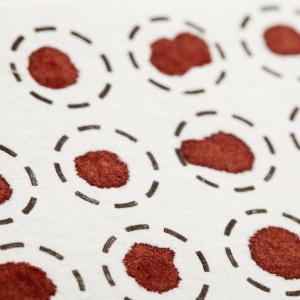New Accurate and Simpler SMA Diagnostic Method by SMN1-Deletion Test Revealed

 A study published in the Kobe Journal of Medical Sciences revealed a new method for the diagnosis of spinal muscular atrophy (SMA) by specifically detecting deletions in the SMN1 gene. The study was led by researchers at Kobe University Graduate School of Medicine and Kobe Pharmaceutical University and is entitled “SMA Screening System Using Dried Blood Spots on Filter Paper: Application of COP-PCR to the SMN1 Deletion Test.”
A study published in the Kobe Journal of Medical Sciences revealed a new method for the diagnosis of spinal muscular atrophy (SMA) by specifically detecting deletions in the SMN1 gene. The study was led by researchers at Kobe University Graduate School of Medicine and Kobe Pharmaceutical University and is entitled “SMA Screening System Using Dried Blood Spots on Filter Paper: Application of COP-PCR to the SMN1 Deletion Test.”
SMA is a rare, devastating motor neuron disease and one of the leading genetic causes of pediatric mortality. It is characterized by the degeneration of nerves controlling muscles and voluntary movement, resulting in muscle weakness, atrophy, paralysis and eventually death. SMA is the result of a mutation or deletion in a gene called survival of motor neuron 1 (SMN1). SMA has no approved treatment.
Besides SMN1, there is another protein variant – SMN2. This variant is mainly produced as an unstable and shortened version of the SMN protein due to a single nucleotide difference in the exon 7 of the gene, and therefore cannot compensate for SMN1 loss. As part of the SMA diagnostic process, individuals should undergo an SMN1 deletion test; however, since SMN2 has a high homology with SMN1, the detection of SMN1 deletion can be difficult. Several methods have been developed to discriminate between SMN1 and SMN2 variants, although they are not available or easily applicable worldwide.
[adrotate group=”3″]
In this study, the research team aimed to develop a simple, accurate detection method for SMN1-deletion to be used worldwide. Analysis was performed on 50 DNA samples, 29 from SMA patients and 21 from healthy controls, from dried blood spots (DBS) on filter paper. All 50 participants had blood collected and tested for SMA. Competitive oligonucleotide priming-PCR (COP-PCR) based on the exon 7 region of the genes was performed to discriminate between SMN1 and SMN2.
Researchers found that their specific COP-PCR technique for exon 7 based on DBS samples allowed the distinction between the two SMN variants, and the results were consistent with the SMA screening performed with fresh blood from the participants in the study.
The team concluded that the combination of DNA extraction from DBS on filter paper and a specific COP-PCR to detect SMN1 and SMN2 offers a new, simpler and accurate SMN1-deletion test that can be readily established in several laboratories worldwide, even in remote facilities. The team also concluded that DBS are a good source of DNA and can be used in disease diagnostics.







